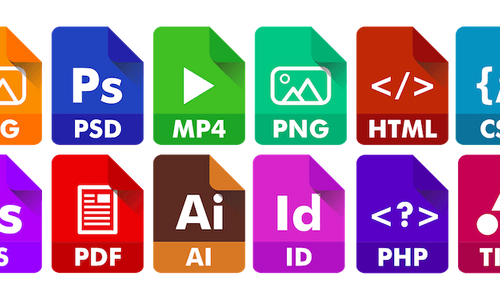When it comes to data storage, there is almost as much diversity in the types of databases as there is in the data that they contain. Designing and implementing a strong enterprise data strategy means that you need to be aware of the different databases and how you might best apply them within your organization.
In IT, the term "flat file" means something very different from the heavy-duty steel construction file cabinets that you might buy from Safco. First developed and implemented in the 1970s by IBM, flat file databases, which are stored as plain text, now enjoy widespread use. But what is a flat file exactly, and what are the use cases for flat file storage? We answer these questions and more below.
What is a Flat File?
A flat file is one that stores a representation of a simple database, which is known as a flat file database. Flat files typically comprise text files with no markup, representing relational data by separating it with a comma or other delimiter. This distinction makes flat file databases different from relational databases (also known as SQL databases), which typically use multiple tables to store information.
To illustrate the difference between flat file databases and relational databases, consider an e-commerce company that needs to store information about its customers’ orders:
- A flat file database used for this purpose would only contain a single table, with each record in the table describing an individual order. The columns of the table would include the order ID and order details, as well as the customer’s personal information (name, address, etc.).
- A relational database would contain multiple tables: one for the order details and one for the customer's information. Each order would simply refer to the corresponding entry in the customer table, rather than duplicating the customer information for every order (as is necessary with a flat file database).
The term “flat file database” also more broadly describes data repositories that can easily include a plaintext format—NoSQL databases that store unstructured data, Excel spreadsheets, Microsoft Word documents, JSON documents, etc.
The Structure of Flat File Databases
In this section, we will delve a little deeper into the structure of flat file databases, and what a flat file system typically looks like.
Flat file databases usually have a simple structure, reflecting the straightforward nature of the underlying data. The first row of a flat file contains the field name for each column in the database, and each row after the first represents a single record.
There are two main data formatting options for storing information in flat files: fixed widths and delimiters.
- Flat files with a fixed width define a set length for the data in each column.
- Flat files with delimiters denote the end of a data field with a specific character (e.g. a comma, a pipe, or a tab character). These delimiter characters are essentially digital "dividers" separating one field of delimited data from the next. Flat files that use commas as delimiters are also known as CSV files (CSV stands for "comma-separated values").
Because flat files store data in plaintext format, these databases make it difficult to enforce a specific data type (e.g. strings, datetime values, integers, or floating point numbers) for each column. This means you need to take care when you import data from flat files—the data type and content of each column should be in line with your expectations.
When Should You Use a Flat File Database?
We’ve discussed what a flat file database is and how it’s structured. But knowing what the benefits and use cases of flat file databases are is equally important, especially since they have some limitations that traditional relational databases do not.
By far the biggest attraction of flat files is their uncomplicated structure. They also have a smaller footprint than traditional SQL databases do. For these reasons, flat file databases are widely used to store internal configuration data, log data or streaming data in situations where using a relational database would be overkill. If you have information that does not require multiple tables to represent, using a flat file database allows you to quickly and easily import this data into a target data warehouse or data lake.
On the other hand, flat files are not a good option if you want to avoid data redundancy and duplication. This is because they can only contain a single relational table. Flat files also cannot enforce various database relationships and constraints; this will require the use of an actual relational database management system (RDBMS).
Conclusion
Flat file databases are simpler in design and usually smaller than their relational database counterparts. These qualities make flat file databases an appealing choice for many basic uses, including as part of an ETL and data integration strategy.
How Integrate.io Can Help With Flat Files
When you're ready to integrate flat file databases into your data integration workflow, Integrate.io is here to help. The Integrate.io platform provides an intuitive, user-friendly, drag-and-drop visual interface that makes it easy for you to build robust data pipelines between your data sources and targets.
Want to know how else Integrate.io can help with your enterprise data integration and ETL needs? Get in touch with our team of data integration experts today for a chat about your business needs and objectives, or to start your 7-day demo of the Integrate.io platform.










